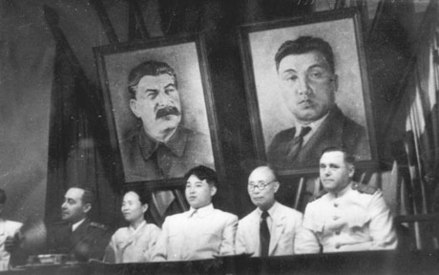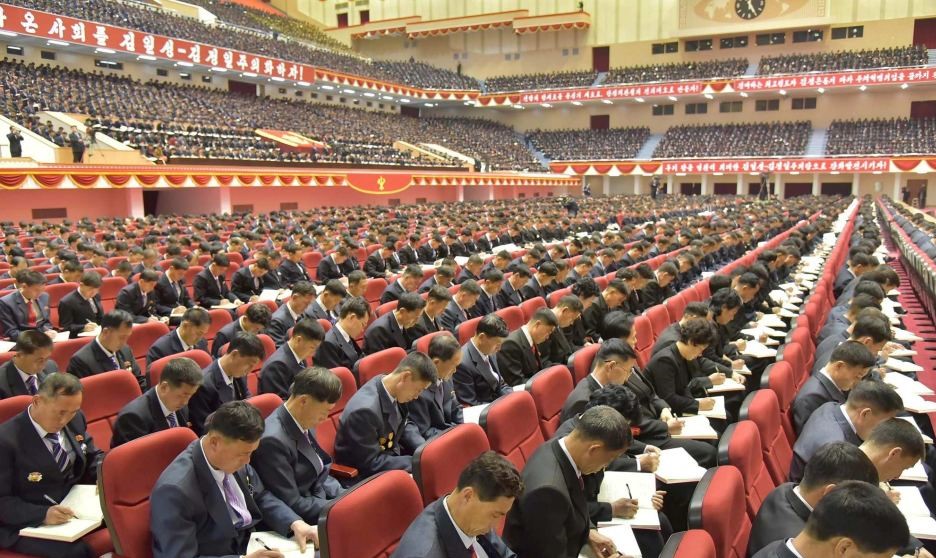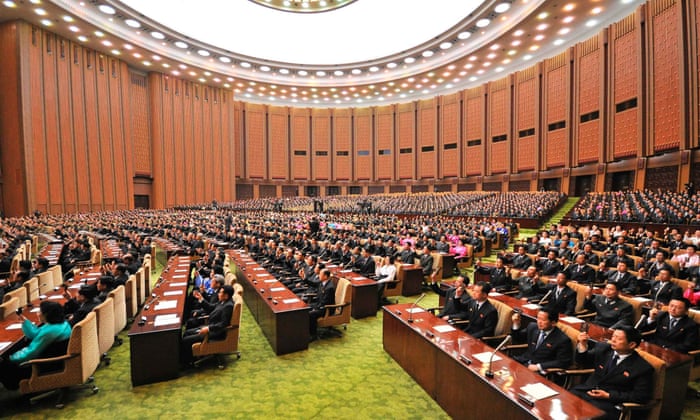Whilst the Workers Party of Korea are the leading party in the coalition that governs North Korea, they are not the only party in the nations parliament. In fact there are more parties with seats in the Democratic Peoples Republic of Korea than in the United States of America.
These all come together to form the Democratic Front for the Reunification of the Fatherland, not dissimilar to other Popular Fronts that occurred after World War 2 in Socialist states . The front though is very much by the Workers Party of Korea.
To read more about the political parties of North Korea, click here, or the Democratic Front for the Reunification of the Fatherland here.
Founding of the Workers Party of Korea

While the official roots of the party have been traced back to the 1926 formation of the Down-With-Imperialism Union, the basic formation of the current party can be traced more closely to the end of the Second World War.
On October 13th, 1945, the North Korean Bureau of the Communist Party of Korea was established and led by Kim Yong-Bom. This was subordinate at the time to the Seoul based Communist Party of Korea. The bureau later morphed into the Communist Party of North Korea, before the big events of 1946!
On July 22nd, 1946, the North Korea Bureau joined with the New People’s Party of Korea, the Democratic Party and the Chondoist Chongdu Party (supporters of an influential religious movement) to form the North Korean Fatherland United Democratic Front.
One week later, on July 29th, who would believe but this author’s birthday the New People’s Party and the Bureau merged and thus the Workers Party of North Korea was officially born.
In the South, the Communist Party of South Korea, the southern branch of the New People’s Party and the People’s Party of Korea merged in November of 1946, thus forming the Workers Party of South Korea and setting the stage for modern communist times on the Korean peninsula.
Finally, on June 30th, 1949, the two parties were merged into the Workers Party of Korea, a single entity that not only would govern northern Korea but also represent communists in the South.
The Workers Party of Korea in government

From the outset, the Workers Party of Korea was led by Kim Il Sung, who, aside from being the leader of the party, would also be the first and only incumbent President of North Korea.
Following the death of President Kim Il-sung in 1994 and the official three years of mourning Kim Jong-Il, the son of the President was named the First-Secretary of the Workers Party of Korea. This, as well as being head of the National Defense Commission, made him the paramount leader of the DPRK. Some have considered the Workers Party of Korea to have had less importance during this era due to the Military First policy, although this is open to interpretation.
The rule of Marshal Kim Jong-Un
In 2011 General Kim Jong-Il passed away to be replaced by Marshal Kim Jong-Un. It was decided as per previous precedents that the title of First Secretary of the Workers Party of Korea would be retired and that Kim Jong-Un would be granted the title of Chairman.
This is the reason that you will sometimes hear him referred to as Marshal Kim Jong-Un, as well as Chairman Kim Jong-Un (as Mr Trump calls him).
In a further break from the past, the National Defense Commission was replaced by the State Affairs Commission, which again many felt would be a move back towards a move classic Vanguard Party style of socialist governance.
Workers Party of Korea representation of the Supreme Peoples Assembly

How many seats does the Workers Party of Korea have in the North Korean parliament? As per the 2019 elections in North Korea, there are now 687 representatives in the assembly, which are represented as follows.
Workers Party of Korea 607
Social Democratic Party 50
Chondoist Chongu Party 22
Chongryon 6
Independent 2
This obviously makes them the most important party in North Korea and the governing party.
Interestingly the North Korean electoral system consists of constituencies working on the “first past the post” system.
What does the Monument to Party Foundation Mean?
One of the best and most famous moments in North Korea is the party foundation monument located across from the Mansundae Grand Monuments (the statues of Kim Il Sung and Kim Jong-Il). The monument consists of a hammer and sickle, as per most communist states, but with a difference.
The emblem for the Workers Party of Korea also consists of a paintbrush. The paintbrush represents the intellectuals, whereby the hammer and sickle are for the workers and farmers. This makes the emblem for the Workers Party of Korea fairly unique with regards to global communist parties. Thus the Party Foundation Monument of Pyongyang is also quite unique when compared to other socialist party monuments around the globe (where they still exist).
Workers Party of Korea in 2024?
While the country is closed there is even less information than we would usually get about the country, but we do know a few things. Firstly that the WPK are very much in charge, but also that things have not always gone to plan. There have for example been high-level sackings as well as dressing downs and efforts to fight corruption.
And of course we know one other thing! North Korea are slowly starting to reopen themselves to the wider world, which hopefully will mean us being able to to bring tourists to the country again.
Therefore whilst the party of power does not change in the DPRK, it is nowhere near as stagnant as people often think and in many ways is constantly evolving, as is North Korea itself.
Every tour we do to Pyongyang visits the iconic Party Foundation Day Monument, see you in Pyongyang!





